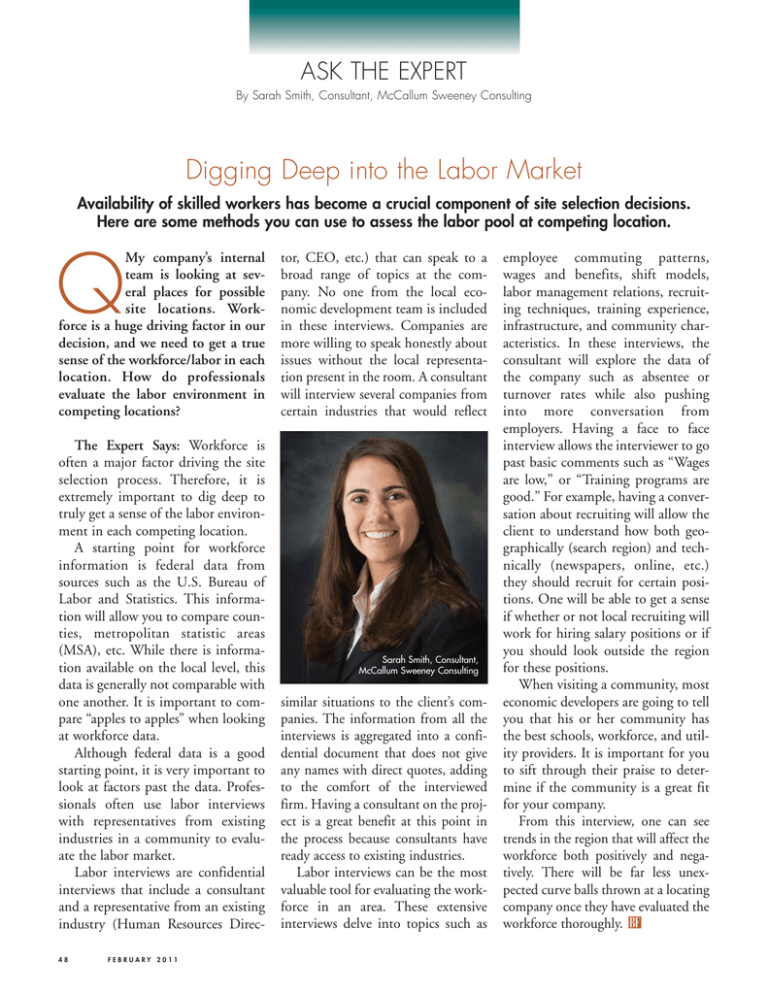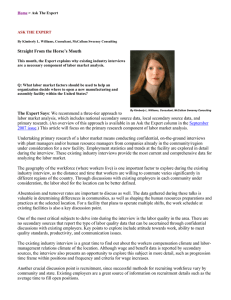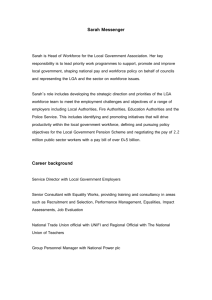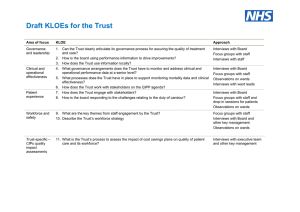Q
advertisement

ASK THE EXPERT By Sarah Smith, Consultant, McCallum Sweeney Consulting Digging Deep into the Labor Market Availability of skilled workers has become a crucial component of site selection decisions. Here are some methods you can use to assess the labor pool at competing location. Q My company’s internal team is looking at several places for possible site locations. Workforce is a huge driving factor in our decision, and we need to get a true sense of the workforce/labor in each location. How do professionals evaluate the labor environment in competing locations? The Expert Says: Workforce is often a major factor driving the site selection process. Therefore, it is extremely important to dig deep to truly get a sense of the labor environment in each competing location. A starting point for workforce information is federal data from sources such as the U.S. Bureau of Labor and Statistics. This information will allow you to compare counties, metropolitan statistic areas (MSA), etc. While there is information available on the local level, this data is generally not comparable with one another. It is important to compare “apples to apples” when looking at workforce data. Although federal data is a good starting point, it is very important to look at factors past the data. Professionals often use labor interviews with representatives from existing industries in a community to evaluate the labor market. Labor interviews are confidential interviews that include a consultant and a representative from an existing industry (Human Resources Direc- 48 FEBRUARY 2011 tor, CEO, etc.) that can speak to a broad range of topics at the company. No one from the local economic development team is included in these interviews. Companies are more willing to speak honestly about issues without the local representation present in the room. A consultant will interview several companies from certain industries that would reflect Sarah Smith, Consultant, McCallum Sweeney Consulting similar situations to the client’s companies. The information from all the interviews is aggregated into a confidential document that does not give any names with direct quotes, adding to the comfort of the interviewed firm. Having a consultant on the project is a great benefit at this point in the process because consultants have ready access to existing industries. Labor interviews can be the most valuable tool for evaluating the workforce in an area. These extensive interviews delve into topics such as employee commuting patterns, wages and benefits, shift models, labor management relations, recruiting techniques, training experience, infrastructure, and community characteristics. In these interviews, the consultant will explore the data of the company such as absentee or turnover rates while also pushing into more conversation from employers. Having a face to face interview allows the interviewer to go past basic comments such as “Wages are low,” or “Training programs are good.” For example, having a conversation about recruiting will allow the client to understand how both geographically (search region) and technically (newspapers, online, etc.) they should recruit for certain positions. One will be able to get a sense if whether or not local recruiting will work for hiring salary positions or if you should look outside the region for these positions. When visiting a community, most economic developers are going to tell you that his or her community has the best schools, workforce, and utility providers. It is important for you to sift through their praise to determine if the community is a great fit for your company. From this interview, one can see trends in the region that will affect the workforce both positively and negatively. There will be far less unexpected curve balls thrown at a locating company once they have evaluated the workforce thoroughly.





